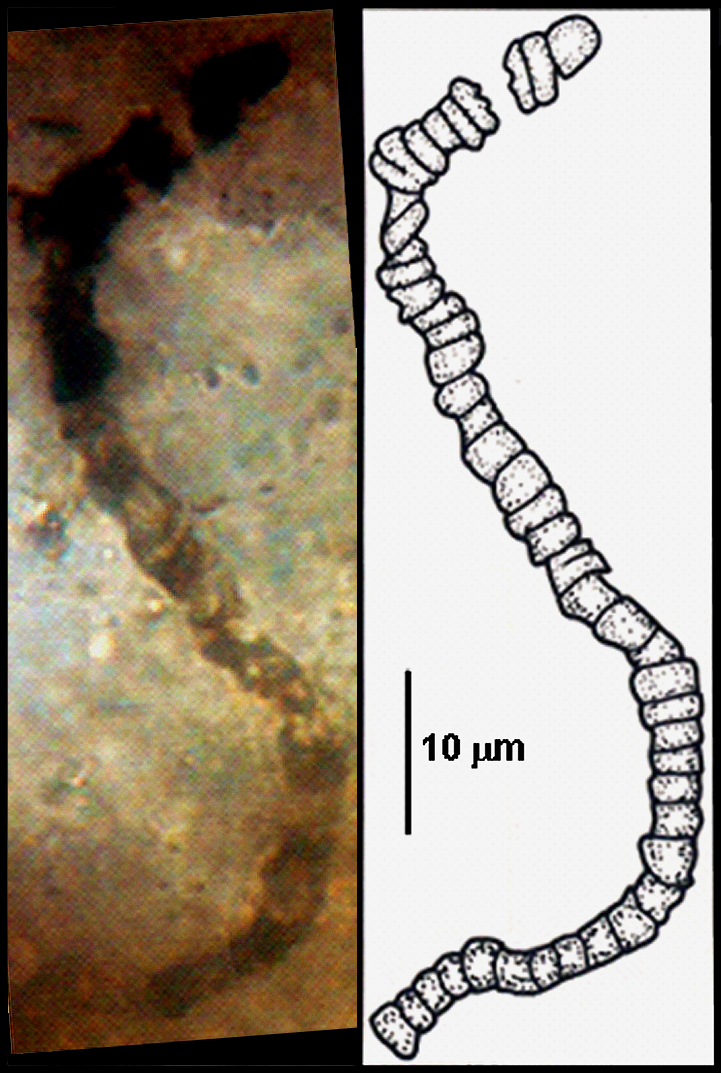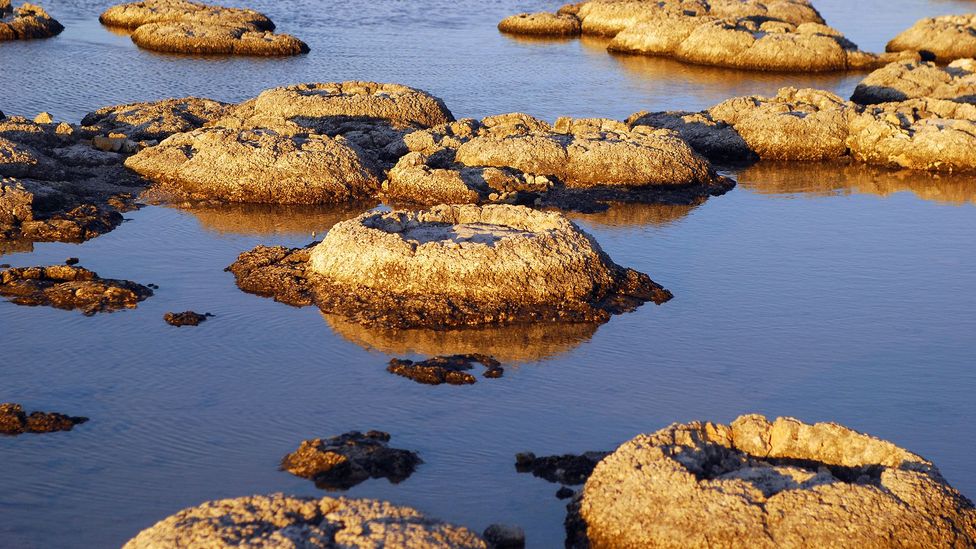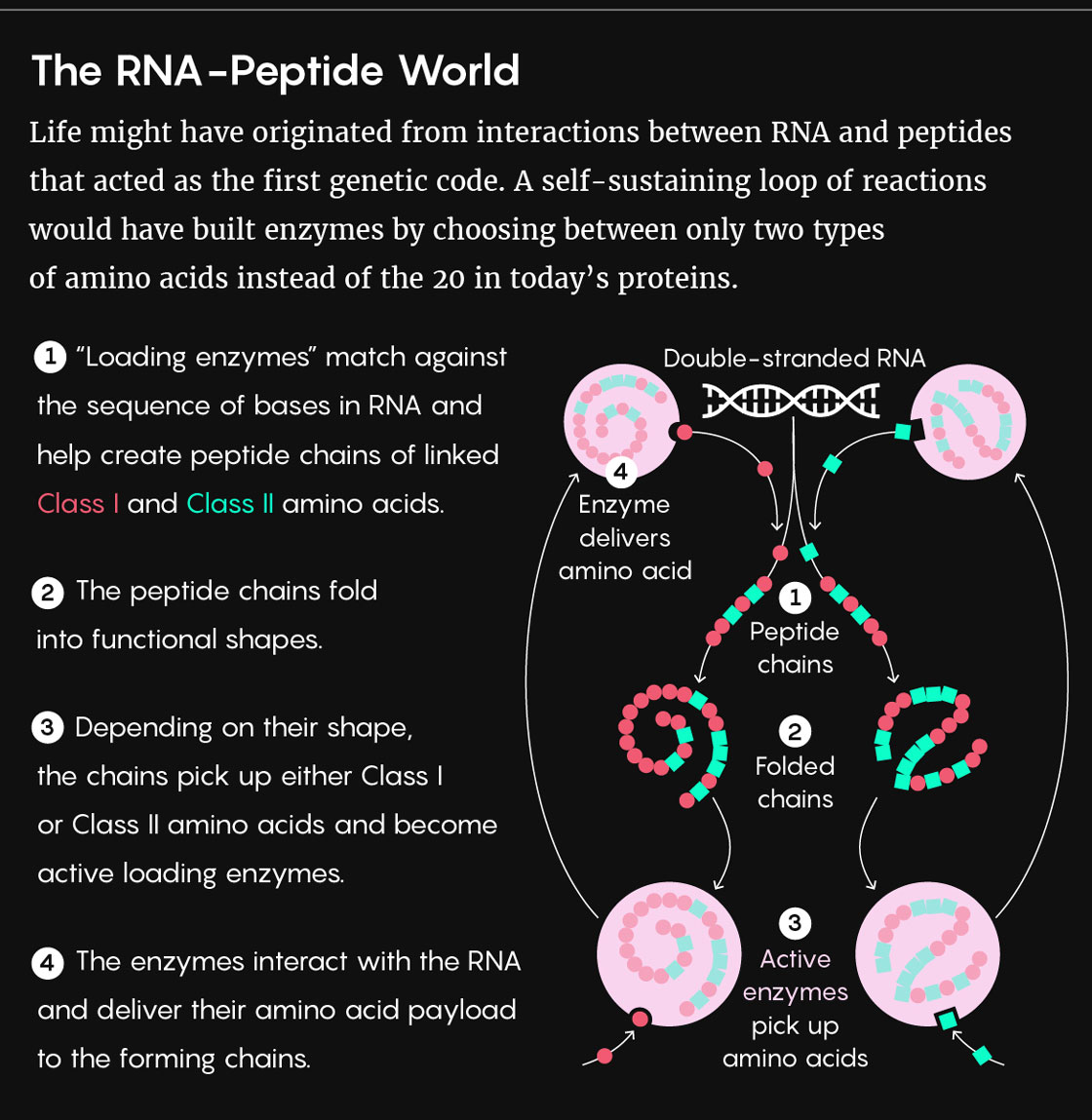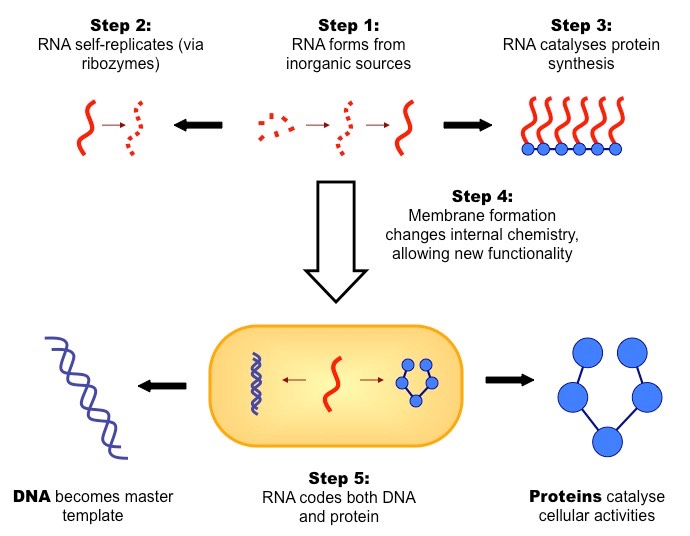Jed Quiaoit
Samantha Himegarner
AP Biology 🧬
358 resourcesSee Units
When Did Life Start?
The origin of life on Earth is a topic of ongoing scientific research, and several hypotheses have been proposed to explain how life first emerged on our planet. These hypotheses are supported by various types of scientific evidence, including geological, chemical, and biologic. 🌎

Source: UW Madison News
Geological evidence provides support for models of the origin of life on Earth by providing information about the conditions on the planet during its early history.
For example, it is known that Earth formed approximately 4.6 billion years ago (bya), and that the environment was too hostile for life until about 3.9 bya. This is based on evidence from the geological record, such as the composition of the early atmosphere, the presence of liquid water, and the intensity of the sun's radiation. By understanding the conditions of the early Earth, scientists are able to construct models of how life could have emerged under those conditions.
Additionally, the earliest fossil evidence for life on Earth dates to around 3.5 bya. This is based on the discovery of fossilized stromatolites, which are layered structures formed by ancient microbial communities. These fossils provide strong evidence that life existed on Earth at least 3.5 billion years ago, and they also provide insight into the nature of that early life.

Source: BBC
Taken together, the evidence from geology, chemistry, and biology provides a plausible range of dates when the origin of life could have occurred. For example, based on the geological evidence, scientists believe that life could have emerged on Earth as early as 3.9 bya and as late as 3.5 bya. However, remember that the origin of life is a complex process and still not fully understood and the range of possible dates could be refined as new discoveries and technologies emerge.
Modeling Life's Origin
There are several models about the origin of life on Earth, each of which proposes a different explanation for how life first emerged on our planet. These models can be broadly divided into two main categories: abiogenesis and panspermia.
One model of abiogenesis is the "primitive Earth" model. This model proposes that life emerged on Earth through the gradual synthesis of organic molecules from inorganic precursors. According to this model, the primitive Earth provided the necessary conditions for this synthesis to occur, such as the presence of available free energy and the absence of a significant quantity of atmospheric oxygen (O2). This model suggests that the first living organisms were simple, self-replicating molecules that formed spontaneously through chemical reactions in the early Earth's oceans. 🪐
Another model is the "panspermia" model, which proposes that organic molecules were transported to Earth by a meteorite or other celestial event. This model suggests that the organic molecules that make up life, such as amino acids and nucleotides, were formed in the dust clouds of other planets or in comets and meteorites. These molecules could have then been transported to the early Earth by comets or meteorites, where they assembled into the first living organisms. ☄️
Current scientific understanding suggests that it's likely that multiple mechanisms were involved. Both models have evidence to support them and it's not mutually exclusive. For example, it's possible that both abiogenesis and panspermia could have contributed to the origin of life on Earth, with inorganic precursors forming on Earth and organic molecules being brought by meteorites, and the combination of these factors led to the emergence of life on Earth! Hopefully we find out the truth soon...
What Does the Chemistry Tell Us?
Chemical experiments have shown that it is possible to form complex organic molecules from inorganic molecules in the absence of life. This is known as abiogenesis, the process of the origin of life from non-living matter. These experiments have been critical in shedding light on the early stages of the emergence of life on Earth, and have provided evidence to support models of the origin of life that propose that life emerged through the gradual synthesis of organic molecules from inorganic precursors. 🌱
As briefly described in the previous section, one of the key aspects of these experiments is the formation of organic molecules or monomers from inorganic precursors. These organic molecules, such as amino acids and nucleotides, served as building blocks for the formation of more complex molecules. Scientists have been able to demonstrate that these organic molecules can be formed under conditions that are thought to have existed on the early Earth, such as in the presence of available free energy and the absence of a significant quantity of atmospheric oxygen (O2).
The joining of these monomers produced polymers, which are long chains of repeating units. These polymers have the ability to replicate, store, and transfer information, which are the hallmarks of life. For example, nucleic acids, such as DNA and RNA, store and transfer genetic information, and proteins, such as enzymes, catalyze chemical reactions. The formation of these polymers is an important step in the emergence of life, as they allow the replication and evolution of the first living organisms.
RNA's Role in the Puzzle
The RNA World Hypothesis is a widely accepted model for the origin of life that proposes that RNA (ribonucleic acid) could have been the earliest genetic material. According to this hypothesis, RNA was the first molecule to emerge that had the ability to store and transmit genetic information, catalyze chemical reactions and replicate itself.

Source: Quanta Magazine
The RNA World Hypothesis proposes that RNA molecules were the first self-replicating entities on Earth, and that they gradually gave rise to more complex forms of life, such as the emergence of DNA and proteins. It suggests that RNA was able to perform all three functions of life: storing and transmitting genetic information, catalyzing chemical reactions and replicating itself. This idea supports the idea that RNA was a "jack of all trades" molecule that could have been the precursor to all other forms of genetic material, such as DNA and proteins. 🎃
One of the key pieces of evidence for the RNA World Hypothesis is the ability of RNA to act as both a genetic molecule and a catalyst. Scientists have been able to demonstrate that RNA can catalyze a wide range of chemical reactions, including those that are essential for life, such as the polymerization of nucleotides, the formation of peptide bonds and the synthesis of sugars. This ability of RNA to catalyze reactions is thought to have been critical for the emergence of life, as it would have allowed for the formation of more complex molecules and the replication of RNA molecules.

Source: BioNinja
Additionally, the RNA World Hypothesis also offers explanations for how the first self-replicating RNA molecules could have formed. It proposes that RNA could have formed through the gradual polymerization of nucleotides in the presence of suitable catalysts, such as clay minerals and other inorganic catalysts. 🧱
Browse Study Guides By Unit
🧪Unit 1 – Chemistry of Life
🧬Unit 2 – Cell Structure & Function
🔋Unit 3 – Cellular Energetics
🦠Unit 4 – Cell Communication & Cell Cycle
👪Unit 5 – Heredity
👻Unit 6 – Gene Expression & Regulation
🦍Unit 7 – Natural Selection
🌲Unit 8 – Ecology
📚Study Tools
🧐Exam Skills

Fiveable
Resources
© 2025 Fiveable Inc. All rights reserved.